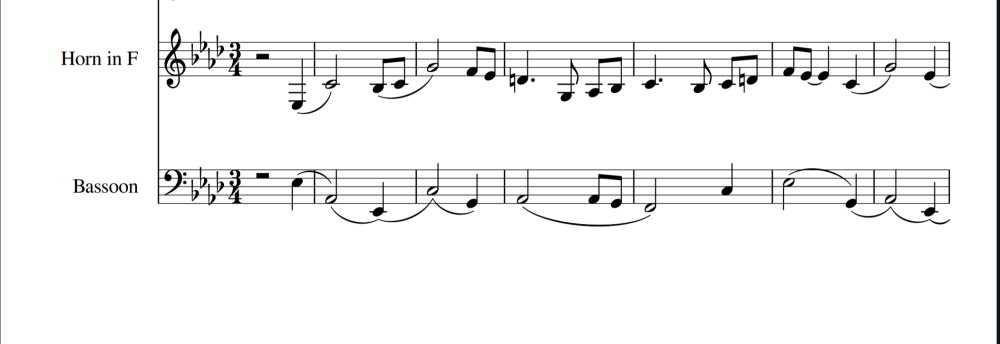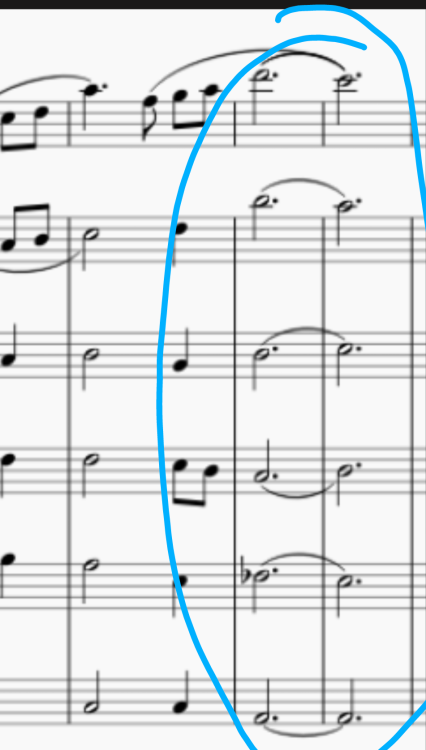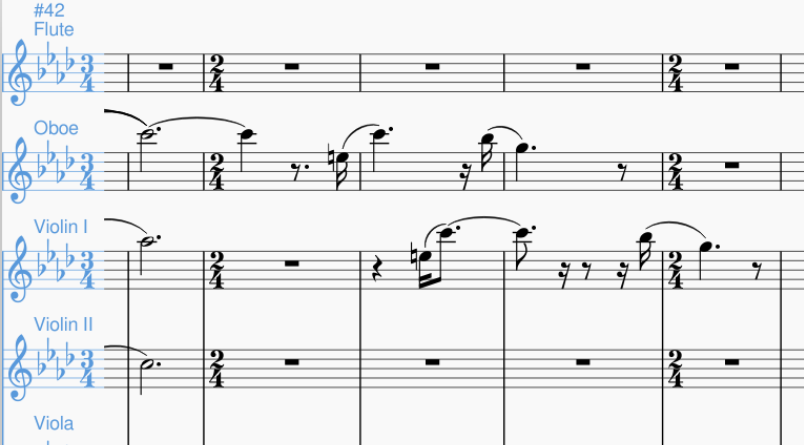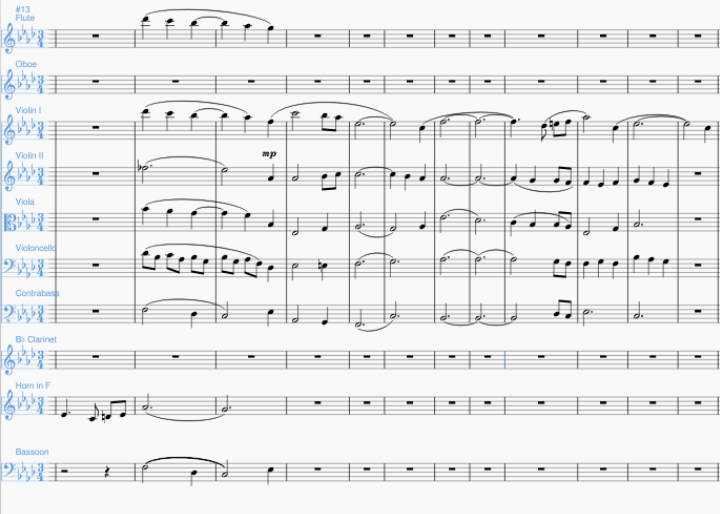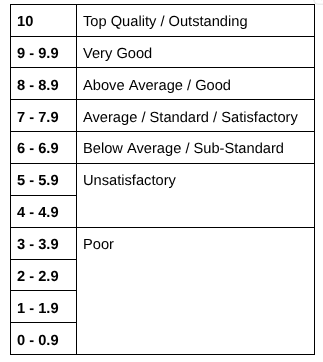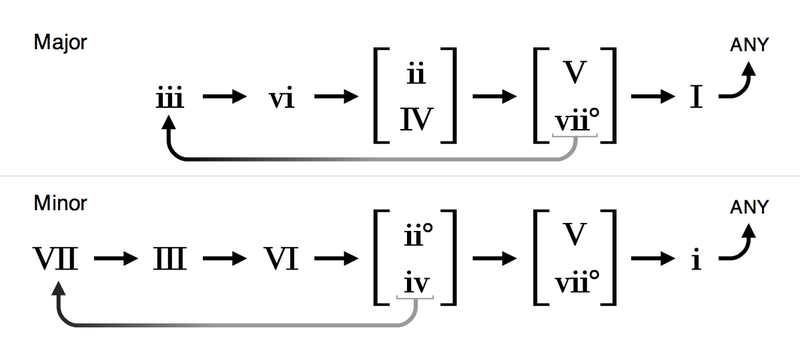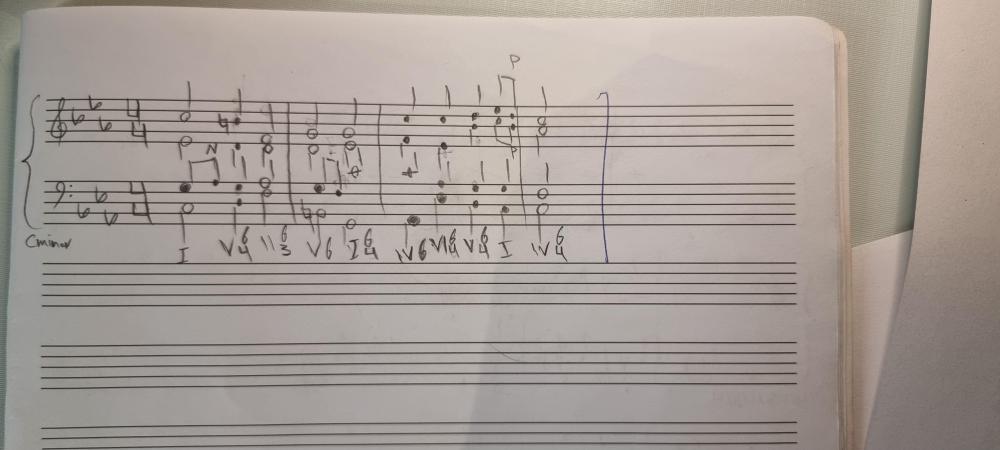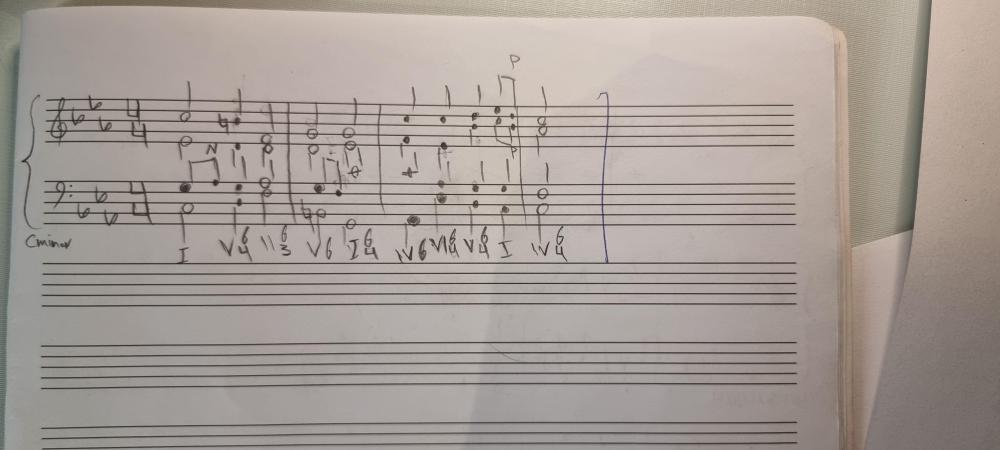All Activity
- Past hour
-

Oboe Concerto
GospelPiano12 replied to GospelPiano12's topic in Incomplete Works; Writer's Block and Suggestions
Here is the French Horn + Bassoon intro/prelude material I was writing. I'm feeling mehh about it, but only because it doesn't really connect to the piece imo. Here is the stuff that I am just in LOVE with though. The way the ensemble creates this movement is just wonderful to me. Still working on filling in the string parts and incorporating the French Horn and Bassoon into these sections with the melody. However, I think that's too big of a start to the piece, so I'm still brainstorming on how I can lead into that -> hence the F.H & Bassoon intro/prelude. Now unto the fun stuff Not sure if anyone is familiar with the work of Pierre Boulez, but if you are please let me know. My idea for this section is to have these big jumps up and down in different intervals and have the ensemble mimic and echo those movements in the rests of the oboe. So that way, we get a very, for lack of a better word, "quacky", and almost disjointed sound. The reason I mention Boulez is because of his piece, "Le Marteau sans Maître", that has the exact sound I'm going for. -> wanting to see if I can create a system that will make this portion easier to write,I want it to be less "musical" than the more elegant (only word that's coming to mind), lyrical section. (This would be coming after this part) - Today
-
.thumb.png.8b5b433a341551e913a34392660bc95b.png)
Fall 2025 Halloween Competition
PeterthePapercomPoser replied to PeterthePapercomPoser's topic in Monthly Competitions
This is a very informal competition. Usually, in a formal competition we would have dedicated judges who used judging criteria and scoring definitions. But, then, if they were a judge they would not be allowed to participate in the competition themselves. And the submissions would also have to be kept anonymous to stave off any impression of favoritism. But since, ultimately, this competition is just a fun challenge without monetary rewards, we decided to do away with all that formality. But, we would be honored if you (or everybody really) donated their very valuable time to review the music submitted in as detailed a way as you feel is necessary and appropriate! AND, if you review all the participant's works you get an "Ardent Reviewer" badge which everyone will be able to see in your profile! In previous, formal competitions we used the following scoring definitions: And the following scoring categories: It would honor us if you (or anybody who feels up to the challenge) used these categories and definitions to review the pieces submitted! Thank you for whatever time and effort you're willing to give! -

Fall 2025 Halloween Competition
Monarcheon replied to PeterthePapercomPoser's topic in Monthly Competitions
I'm a little confused. If everything's decided via popular poll, what exactly are the criteria for "judging"? For instance, do I need to spend a lot of time on a score? Will I be be viewed less favorably if my audio recording is just standard MIDI? The competition idea is exciting, but don't know where I need to focus my time if I were to join. -
Hello @Justin Gruber and welcome to the forum! Thank you for your submission! I have taken the liberty of editing this post to include the mp3 you uploaded to the other post and I'll delete that other duplicate post since we want you to submit your music as its own dedicated topic so that the members at large can have a space to review it properly. Thanks again for your participation!
-
Justin Gruber started following Fall 2025 Halloween Competition
-
Justin Gruber joined the community
-
Hello everyone, I’d like to share my piece Fumage for flute, oboe, and bassoon as my submission for the Fall 2025 Halloween Competition. 🎃 About the Piece Fumage is inspired by the surrealist art technique of the same name, where smoke from a candle or lamp leaves ghostly, shifting impressions on paper. This piece takes that imagery into sound, with wisps of timbre, sudden bursts, and eerie colorations from the woodwinds. It mirrors candlelight, smoke, and the blurred line between reality and apparition—an atmosphere that fits the surreal and haunting spirit of Halloween. Instrumentation: Flute, Oboe, Bassoon Duration: ~7 minutes Score (PDF) Audio (MIDI) Thanks for listening and I welcome any feedback! –– Justin Gruber
- 1 reply
-
- 1
-

- Yesterday
-
"Turmoil" for Brass Quintet | Kyle Hilton (UncleRed99)
TristanTheTristan replied to UncleRed99's topic in Chamber Music
I like the dynamics added. Sadly the rhythm didn't make total sense at the start to me. Especially not the triplets. Than there it is transposition did with an incredibly good use of dissonance. Sounds like how you describe it. Congratulations! The problem is that 'Turmoil' means uncalm, but this was medium-calm to me. -
Movement 1 Another Stravinsky styled piece... Anyways, my favourite part was bar 11 to 30. The rhythm sometimes is random, but feels like poco accelerando. I saw a cadenza at bar 37 and 45 to 46. I like the chromatic feel. As Omicron said, you have a lack of dynamics and not enough moments that are not tutti. You should add more of these. In contrast with Omicron, I believe the ending made perfect sense. It is also late, here, so I will continue later. Please be patient.
-
Finale in Am for violin and background
TristanTheTristan replied to semotivo's topic in Chamber Music
And background............ Anyways, nice theme, but it is a little bit empty. If you wanted to be minimalist, then there is no problem with that. I don't like perfect fifths, by the way. Else, it is nice! -
so yeah. I do improvise
-
I am also in a jazz band.
-
Is this homework? Or just self-study? Hopefully not the former lol Assuming you're studying both voice-leading and harmony, there are a lot of problems, but the foundations are there! All of your chords have all the chord tones present, which is a great start and, for the most part, you correctly identified your non-chord tones. Measure 1: a. Get in the habit of putting serif lines on all of your major Roman numerals. Most teachers will mark you down if they just see a v because they can't tell if it's major or minor. b. No retrogressions: in the first measure, your V (dominant) chord goes to ii˚6 (predominant), which isn't allowed. I've attached a chord chart for you. c. @Henry Ng Tsz Kiu is right. Leading tones in the outer voices must resolve up to the tonic in the next chord. d. This bar has five beats in it, despite the 4/4 meter. e. And, yes, Henry's also right that your neighbor tone creates a parallel fifth against the alto. Measure 2: a. Your first V6 chord's tenor moves down to the seventh (F) as a passing tone, and sevenths must ALWAYS resolve down, so it should go to E-flat in the next chord, which it doesn't. b. Same issue with leading tones in the outer voices, but this time in the bass. The B-natural should move up to C, which fixes the issue @Henry Ng Tsz Kiu mentioned about avoiding 6/4 chords unless they're serving one of the four functions he mentioned. c. The tenor is only three beats long. Measure 3: a. Bit of a large leap from G to C in the soprano, but this isn't a huge deal. Technically doesn't break any rules, except we want to see it resolve in the opposite direction of the leap. b. The first 6/4 chord here isn't passing, neighboring, pedal, or cadential. If your 6/4 chord requires a leap either in or out, chances are it's not correct, unless it's cadential. c. The second 6/4 chord here is technically passing, but wrong to be coming out of another 6/4 chord. d. No minor v's (yes, minor v's exist, but students are taught to avoid them). If you did make the B-flat a B-natural, you still have a problem because the alto has to leap by an augmented or diminished interval, which is not allowed. Measure 4: a. I think you're misunderstanding what a plagal cadence is: the piece should still end on i, but approached by iv, not ending on iv. Plagal cadences aren't really a thing anyways... long story, but they're more often extensions to previous cadences. I would stick to HCs, PACs, and IACs, unless you're explicitly trying to work with plagal motion. b. End on a root-position chord, not a 6/4. c. The last two beats of this bar have too big of a space between the tenor and alto. Voices should be no more than an octave apart from each other, except for the bass relative to the tenor. There's a reason why students HATE learning this stuff, because it feels arbitrary, and it is. Useful in some cases, for sure, but very arbitrary. You should be proud that you're trying to learn a very niche and difficult thing. Keep at it!
-
Tunndy started following Fantasy impromptu Orchastrated
-
https://youtu.be/7S0fxQVLeA0
-
- 1
-

-

the 3rd Movement Of Moonlight Sonata orchasrated
Thatguy v2.0 replied to Tunndy's topic in Orchestral and Large Ensemble
psh, easy, just laboriously enter each single note from the score for 17 hours j/k 😛 -
the 3rd Movement Of Moonlight Sonata orchasrated
Tunndy replied to Tunndy's topic in Orchestral and Large Ensemble
@Thatguy v2.0 Thank you!😁 I tried converting the time signature to 4/4, but sadly there are triplets in the midi I downloaded, so converting the time signature would make them spread across two measures, which is impossible, so musecore didnt let me. I will! And thank you for your comment :] -

the 3rd Movement Of Moonlight Sonata orchasrated
Thatguy v2.0 replied to Tunndy's topic in Orchestral and Large Ensemble
Hey cool! You should keep making videos, you have an entertaining personality 🙂 This is a great thing you're doing, and hopefully you've learned more about orchestration in the process. I would make sure your score is set up properly, just off the cuff I noticed you have this in 3/4. Just change the time sig. to 4/4 or common time, that way you can really see and learn from the masterful syncopation in this. Nice work, share your future videos here! -
Hi @Kian, Welcome to the forum! On the exercise, there’s a parallel 5th in b.1 for alto and tenor. The B natural in b.2 bass should go up to C instead of downward to G. Also be careful of the usage of second inversion chords. Mainly the 6 4 chords are for cadential, passing or neighbouring, but except the V 64 chords are for in b.3 all the other second inversion chords aren’t used properly, esp. the end! At least in SaTB setting the cadence would end on a second inversion chords! Thx for joining us! Henry
-
Henry Ng Tsz Kiu started following Harmonized review
-
Kian started following Harmonized review
-
-
Kian joined the community
-
Please check the correctness of the harmony in the image and are the functions and cadence correct? Is there an error? Can we call the cadence plagal? If there is a problem with this harmony, please write🫡
-
the 3rd Movement Of Moonlight Sonata orchasrated
Alex Weidmann replied to Tunndy's topic in Orchestral and Large Ensemble
Don't think I would've attempted to orchestrate (or-castrate) this sonata; but looks like you had fun with it! I'd love to hear this with the piano part muted. -
Haven't heard your previous two canons; but I like this one! My only suggestion would be to add some slurs and dynamics to your instrumental parts, as currently there are none.
- 1 reply
-
- 1
-

-

Fall 2025 Halloween Competition
Thatguy v2.0 replied to PeterthePapercomPoser's topic in Monthly Competitions
I declare my intent to participate in the competition - Last week
-
Halloween Music - Tis the Season
Alex Weidmann replied to Vonias's topic in Orchestral and Large Ensemble
Scotland actually, and it's Nessie! 🤪😂- 1 reply
-
- 2
-

-


